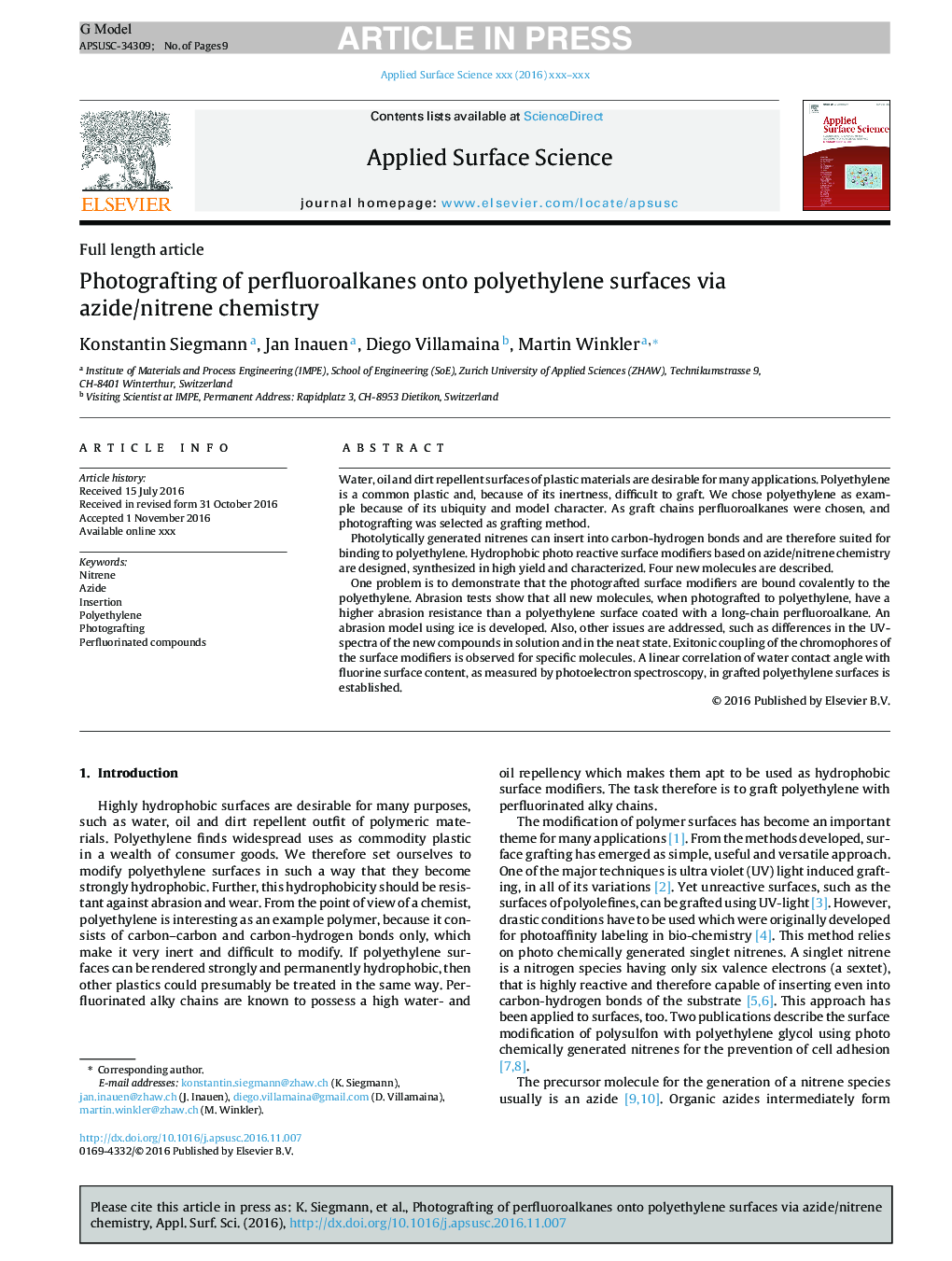| Article ID | Journal | Published Year | Pages | File Type |
|---|---|---|---|---|
| 5352754 | Applied Surface Science | 2017 | 9 Pages |
Abstract
One problem is to demonstrate that the photografted surface modifiers are bound covalently to the polyethylene. Abrasion tests show that all new molecules, when photografted to polyethylene, have a higher abrasion resistance than a polyethylene surface coated with a long-chain perfluoroalkane. Relative abrasion resitances of 1.4, 2.0, 2.1 and 2.5 compared to the fluoroalkane coating were obtained for the four compounds. An abrasion model using ice is developed. Although all four compounds have the same λmax of 266 nm in acetonitrile solution, their molar extincition coefficients increase from 1.6·104 to 2.2·104 with increasing length of the fluorotelomer chain. Exitonic coupling of the chromophores of the surface modifiers is observed for specific molecules in the neat state. A linear correlation of water contact angle with fluorine surface content, as measured by photoelectron spectroscopy, in grafted polyethylene surfaces is established.
Related Topics
Physical Sciences and Engineering
Chemistry
Physical and Theoretical Chemistry
Authors
Konstantin Siegmann, Jan Inauen, Diego Villamaina, Martin Winkler,
